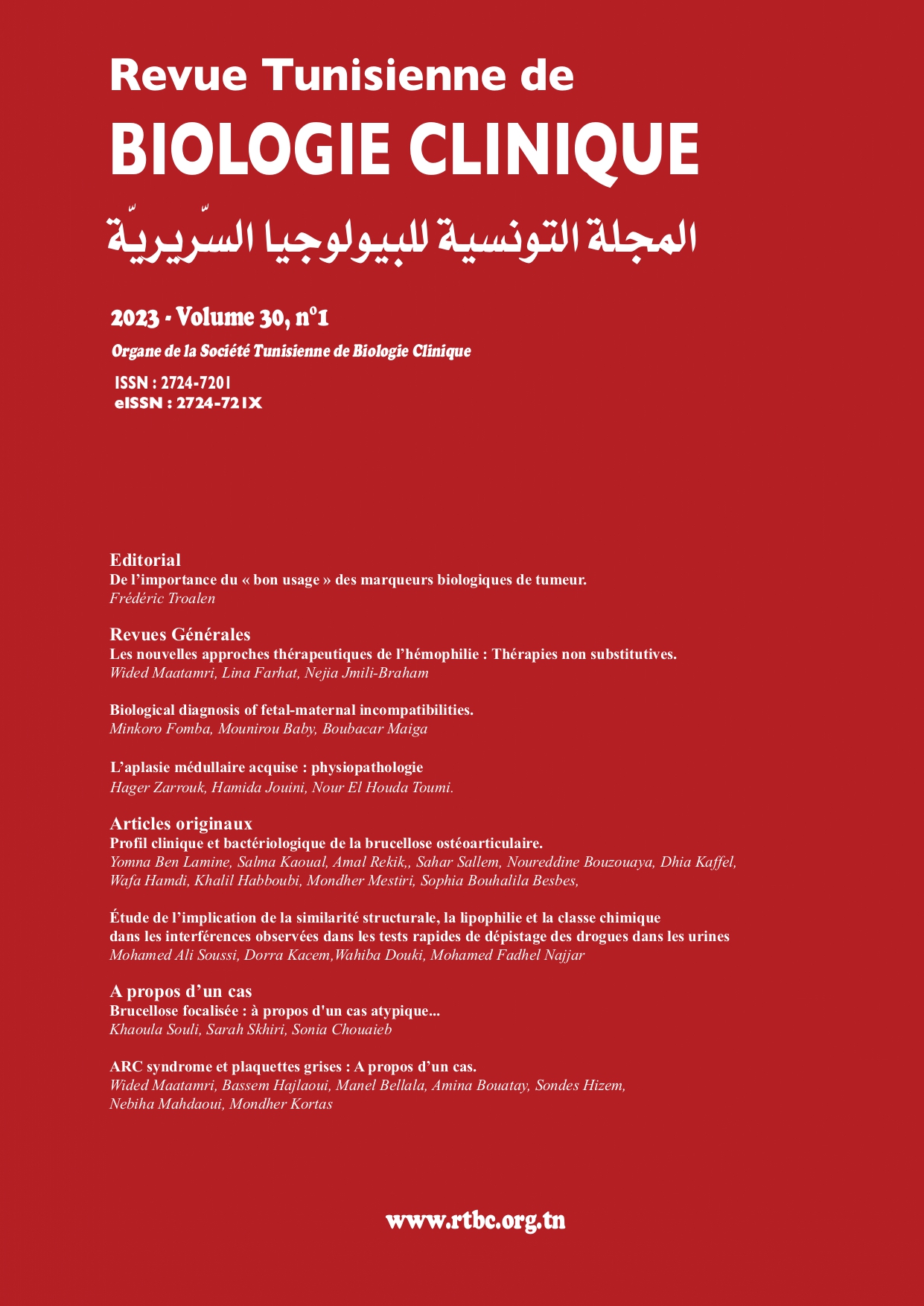Résumé
Introduction: L’allo-immunisation fœto-maternelle résulte d’une suite de phénomènes liés à l’introduction d’un antigène étranger dans la circulation maternelle. La gravité de l’atteinte est due à une immuno-hémolyse entraînant la survenue d’une anémie fetale et/ou d’une anémie néonatale. Le diagnostic des incompatibilités fœto-maternelle érythrocytaire est basé principalement sur l’identification d’agglutinines irrégulières et le titrage/dosage des anticorps. Objectif: Dans la présente revue de littérature, nous résumons les connaissances actuelles sur les principales méthodes d’exploration des incompatibilités fœto-maternelle érythrocytaire. Nous présentons les avantages et inconvénients de chaque méthode afin d’améliorer nos connaissances sur le diagnostic et le suivi des incompatibilités fœto-maternelle érythrocytaire. Méthodes: Nous avons analysé la littérature médicale et les études publiées sur la thématique des incompatibilités fœto-maternelles. Les sites consultés sont PubMed, Transfusion, Elsevier et CNHRHP. Les mots clés utilisés lors de nos recherches sont “recherche anticorps irrégulier”, “dosage pondéral”, “cytométrie flux”, “test Kleihauer”. Conclusion: Le diagnostic des incompatibilités fœto-maternelles doit être fait pendant la grossesse. Celui-ci repose sur le respect du calendrier de surveillance des agglutinines irrégulières. De plus, la technique du génotypage des groupes sanguins du fœtus sur sang maternel a révolutionné le diagnostic des incompatibilités fœto-maternelles. Le diagnostic des incompatibilités fœto-maternelles érythrocytaires et le succès de leur prise en charge reposent sur une coopération et un dialogue multidisciplinaire entre biologistes, obstétriciens et néonatologistes.

Ce travail est disponible sous la licence Creative Commons Attribution 4.0 International .
(c) Tous droits réservés Minkoro Fomba, Mounirou Baby, Boubacar Maiga 2023

